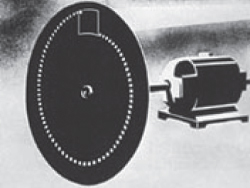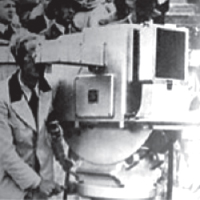Chapter 6Camera Systems in Machine Vision
Horst Mattfeldt
MATRIX VISION, Talstrasse 16, 71570 Oppenweiler, Germany
6.1 Camera Technology
6.1.1 History in Brief
Historically, the mechanical scanning of two-dimensional images by rotating disk with spiral holes (Figure 6.1) (by Paul Nipkow of Berlin) was overcome in the early 1930s by electronic scanning methods with the help of electron tubes.

Figure 6.1 Nipkow Scheibe. (BR-online.)
Manfred von Ardenne and Vladimir Zworykin were the first to demonstrate “television” (Figure 6.2).

Figure 6.2 Video camera in the mid-1930s. (BR-online.)
Scanning and amplifying tubes dominated until they were smoothly replaced by transistors in the 1960s. First the amplifiers became solid state.
The invention of integrated circuits then in the 1970s led to the development of a silicon scanning technology.
Firstly, CCDs (charge couple devices, to be explained later), became popular in the early 1970s and, at the time of writing, still have a relatively high market share in terms of units sold of ∼20% in the machine vision market and 10% in the global sensor market (according to http://info.adimec.com/blogposts/bid/39656/CCD-vs-CMOS-Image-Sensors-in-Machine-Vision-Cameras).
In the past 10 years, there has been a second popular technique gaining ...
Get Handbook of Machine and Computer Vision, 2nd Edition now with the O’Reilly learning platform.
O’Reilly members experience books, live events, courses curated by job role, and more from O’Reilly and nearly 200 top publishers.

